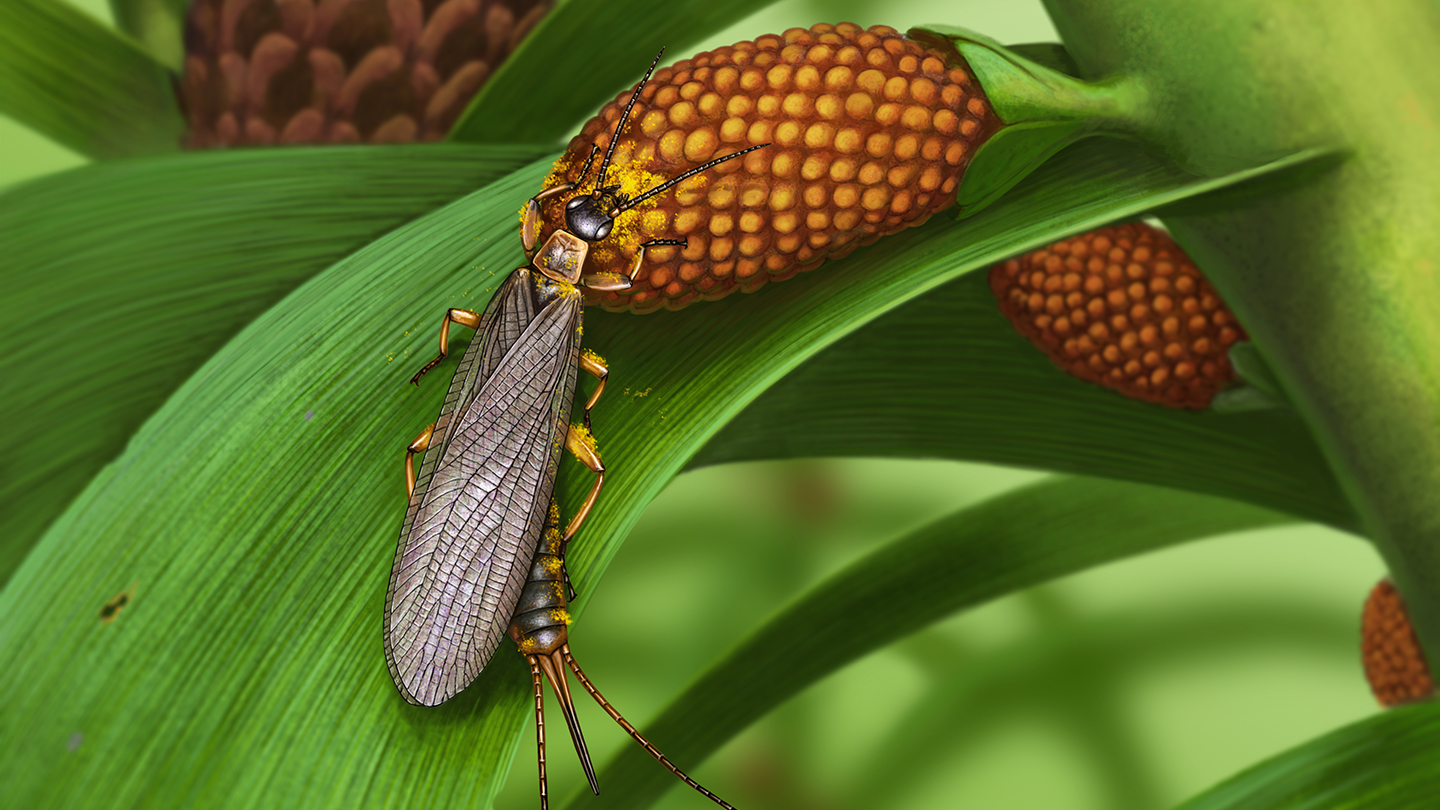The oldest known fossils of pollen-laden insects are of earwig-like ground-dwellers that lived in what is now Russia about 280 million years ago, researchers report. Their finding pushes back the fossil record of insects transporting pollen from one plant to another, a key aspect of modern-day pollination, by about 120 million years.
The insects — from a pollen-eating genus named Tillyardembia first described in 1937 — were typically about 1.5 centimeters long, says Alexander Khramov, a paleoentomologist at the Borissiak Paleontological Institute in Moscow. Flimsy wings probably kept the creatures mostly on the forest floor, he says, leaving them to climb trees to find and consume their pollen.
Recently, Khramov and his colleagues scrutinized 425 fossils of Tillyardembia in the institute’s collection. Six had clumps of pollen grains trapped on their heads, legs, thoraxes or abdomens, the team reports February 28 in Biology Letters. A proportion that small isn’t surprising, Khramov says, because the fossils were preserved in what started out as fine-grained sediments. The early stages of fossilization in such material would tend to wash away pollen from the insects’ remains.
The pollen-laden insects had only a couple of types of pollen trapped on them, the team found, suggesting that the critters were very selective in the tree species they visited. “That sort of specialization is in line with potential pollinators,” says Michael Engel, a paleoentomologist at the University of Kansas in Lawrence who was not involved in the study. “There’s probably vast amounts of such specialization that occurred even before Tillyardembia, we just don’t have evidence of it yet.”
Further study of these fossils might reveal if Tillyardembia had evolved special pollen-trapping hairs or other such structures on their bodies or heads, says Conrad Labandeira, a paleoecologist at the National Museum of Natural History in Washington, D.C., also not part of the study. It would also be interesting, he says, to see if something about the pollen helped it stick to the insects. If the pollen grains had structures that enabled them to clump more readily, for example, then those same features may have helped them grab Velcro-like onto any hairlike structures on the insects’ bodies.














